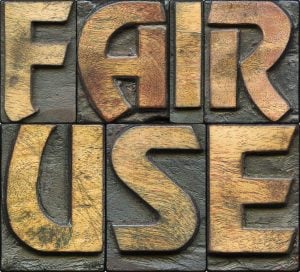Publication Fights Back With Fair Use In Caroline Wozniacki Copyright Case
The memorandum filed by the defendant includes an interesting discussion on bad faith.
 One of the more common and convoluted types of copyright infringement cases now revolves around photographers suing others for the use of their copyrighted content that appears on social media sites. Concise complaints have been filed under Section 501 of the Copyright Act claiming that defendants are reproducing and publicly displaying, without consent, copyrighted photos to the detriment of the copyright holders.
One of the more common and convoluted types of copyright infringement cases now revolves around photographers suing others for the use of their copyrighted content that appears on social media sites. Concise complaints have been filed under Section 501 of the Copyright Act claiming that defendants are reproducing and publicly displaying, without consent, copyrighted photos to the detriment of the copyright holders.
One such action was initiated in the United States District Court for the Eastern District of New York on March 25. The photographer, Michael Barrett Boesen, filed a complaint against United Sports Publications, LTD — the owner of the website LongIslandTennisMagazine.com — for displaying his photograph of tennis player Caroline Wozniacki on its website by way of embedding an Instagram post that was actually first published by Wozniacki.
On October 7, the defendant filed a motion to dismiss the complaint with a memorandum in support that focuses on fair use being a complete defense to the allegations of copyright infringement. I recently highlighted the fair use factors that Houston Texans quarterback Deshaun Watson would need to prove in a separate but similar copyright infringement case initiated by a photographer based on Watson republishing the photographer’s content on his social media accounts.

Legal AI: 3 Steps Law Firms Should Take Now
The obvious distinction in the case concerning Wozniacki’s photograph is that the tennis star first republished the content at issue on her own Instagram account before the defendant used it on its website. Further, while Watson is a professional football player, the defendant here is a news reporting organization, and inclusion of the Wozniacki photograph was much more clearly made as a part of news-related commentary. In fact, the article that embedded the photograph was reporting on the tennis player’s retirement.
The defendant raises an interesting issue concerning the timing of the photographer seeking copyright registration. It says that the photographer has claimed the content was created and published in 2002, but the effective date of the registration was not until December 27, 2019, which was after Wozniacki posted on Instagram and after the article was published. Setting aside the late filing, the memorandum filed by the defendant goes very deep into a fair use analysis, which is often not addressed this early in a pending lawsuit, but a court has the discretion to rule if there is no claim that the plaintiff can support.
Much focus is paid to the fact that the defendant is a newsgathering organization, which primarily plays a role in the first element of the fair use analysis — purpose and character of use. The defendant notes that it embedded Wozniacki’s Instagram post for the purpose of indicating to its readers the origin of the breaking news of her retirement and that this is a textbook transformative use. Additionally, the defendant’s commentary and analysis of the embedded content adds to the transformative nature of the use.
The memorandum filed by the defendant includes an interesting discussion on bad faith. The defendant shifts the focus to the plaintiff and states that the plaintiff is acting in bad faith because, if Wozniacki was not authorized to use the photograph, then the plaintiff should have tried to first remove the content from Instagram or even sue Wozniacki for copyright infringement. He apparently took neither action.
Sponsored

The Business Case For AI At Your Law Firm


Legal AI: 3 Steps Law Firms Should Take Now

Is The Future Of Law Distributed? Lessons From The Tech Adoption Curve

Is The Future Of Law Distributed? Lessons From The Tech Adoption Curve
Skipping to the final fair use factor — the potential effect of the use on the market or value — the defendant says that it is inconceivable that someone interested in licensing or purchasing the content would instead turn to the article at issue. “Even if any market or value of the Photograph was diminished, it would be diminished by the use made by Ms. Wozniacki in her Instagram Post, not the corresponding embedding of the Instagram Post by Defendant,” states the memorandum.
The bottom line is that these types of copyright infringement actions are becoming more common, but the facts of every case tend to require a distinct analysis by defendants. Here, the major distinctions are that the copying was on a newsworthy article, there was actual commentary concerning the content itself, and the content merely embedded based on another individual’s use on social media. It does appear that the defendant has a strong case, even if it does not prevail on its motion to dismiss the action.
Darren Heitner is the founder of Heitner Legal. He is the author of How to Play the Game: What Every Sports Attorney Needs to Know, published by the American Bar Association, and is an adjunct professor at the University of Florida Levin College of Law. You can reach him by email at heitner@gmail.com and follow him on Twitter at @DarrenHeitner.
Sponsored

Early Adopters Of Legal AI Gaining Competitive Edge In Marketplace








